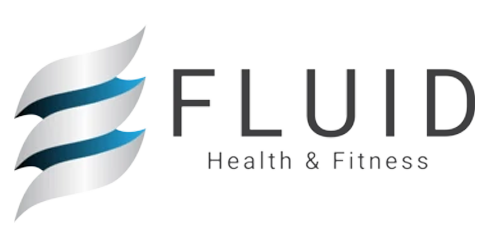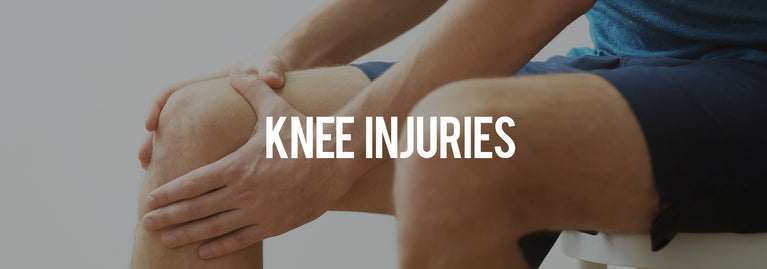Knee pain is one of the most common orthopedic complaints of people in our society. This can be debilitating if left untreated, and affect many aspects of one’s life. There are many reasons why a person may experience knee pain. Some of those reasons may be related to structural damage and injury to the ligaments, tendons, or bones that comprise the knee. Other reasons for pain may be from poor movement patterns and excessive strain on structures, swelling, and/or compressive loading of the knee structures due to this.There can also be poor muscle flexibility, weakness, over-compensations or strains of certain muscle groups. There are many pain-generating structures in the knee, so it important to determine where the impairments lie, and often a full assessment is necessary for this. Often, knee pain can be treated effectively and conservatively with rehabilitation and certain prescribed exercises so as to avoid knee surgery.
The ligaments of the knee are: anterior cruciate ligament, posterior cruciate ligament, medial collateral and lateral collateral ligaments. These ligaments provide proper stability of the knee, and connect the bones of femur (thigh bone) to the tibia (shin bone). If there is not a full tear and a just a partial tear or “sprain” of the ligament, then one may not need surgery and should perform proper strengthening to provide stability for the knee. If there is structural damage and a full tear of the ligaments of the knee, then one may need surgical intervention. Often, there is a traumatic episode that occurs when someone tears a ligament of the knee.The need for surgery would be determined by a medical doctor, and proper steps should be followed as needed.
There are also many tendons that are associated with the knee joint. A tendon connects the muscle to the bone. If tendons are injured or inflamed this can be painful and the tendon may have actual micro-tears within it. This is often referred to as “tendonitis” or “tendinopathy.” This should be treated with specific strengthening and often responds well to “eccentric strengthening” which is when the tendon is being loaded in a specific way and the muscle is actually lengthening during the strengthening. The most common tendon issues are of the patellar tendon in the front of the knee, iliotibial band (a tendinous structure on the outside of the knee), or even the hamstring tendons in the back of the knee. If there is a full tear of a tendon, this may require surgical intervention as well, and is often associated with trauma.
The other structures that may be causing knee pain are the: articular cartilage, medial or lateral meniscus, or the actual bones may be “bruised” with edema present. The articular cartilage is on the ends of the tibia, femur, and patella and acts as a cushion and support to the bones. When there is excessive wearing and damage to the cartilage, one may have pain and may develop arthritis and bony changes. The meniscus is also between the bones of the femur and tibia and acts as a shock absorber between these two surfaces, and when certain parts of it are torn or damaged you may experience pain. A bone bruise is marked by inflammation in or around the bone itself, often resulting from excessive impact to the bony region. If the pain is caused by inflammation then the inflammation should be reduced by either ice, elevation, compression or other means. The cause or precipitating factor to the inflammation should also be assessed so as to get to the root of the problem.
Poor movement patterns can lead to excessive strain on the aforementioned structures and create “wear and tear” that leads to pain and damage. This can result from too much compression on certain parts of the knee. Some examples of poor movement patterns are squatting with the knees coming too far forward and creating a compression across the knee joint and excessive twisting or pivoting of the knees. Also, if the knees are constantly hyperextending, caving in toward the midline of the body (termed “knee valgus”), or not in proper alignment then pain can result. Repetitive movement patterns such as kneeling onto the knees may also be an issue over time.
Poor flexibility in the muscles surrounding the knee joint, such as the quadriceps, can also create pain. This leads to the compression across the patellofemoral joint as noted, as well as not allowing full knee range of motion into bending and straightening positions. Proper flexibility is important to maintain, and can be achieved by stretching, rolling out the muscles with a foam roller or massages.
Weakness is a key contributor to pain in the knee as well. The muscles surrounding the knee, as well as hip, gluteal, and core muscles are responsible for providing “dynamic stability” for the knee joint. This means that they keep the knee safe and supported during movements and are able to change in length compared to the ligaments and other “static” structures. If certain muscles are weak, it may cause compensations, overuse, atrophy, tightness, or straining of the muscles. Muscle balance is extremely important to maintain proper knee health.
Often, if one has weakness in the gluteal muscles then the knee will be affected. The gluteal muscles are the group of muscles that comprise the buttocks, and are: gluteus maximus, gluteus medius and gluteus minimus. All of these muscles originate on the sacrum or ilium (pelvis) and attach to the femur bone (top of the thigh). There is more and more research that points to the gluteal muscles as having an important role in knee stability and decreasing knee pain.
The gluteus maximus muscle is the primary muscle responsible for hip extension (moving the leg behind the body). It is also involved in hip external rotation and trunk extension. This muscle is engaged with stair climbing, running and walking. If the gluteus maximus muscle is weak, then often the knee will not be as stable and the other muscles around the knee may overcompensate. Squeezing your gluteus maximus during stairs and walking can be one way to be sure you are engaging it and using this muscle. By leaning your trunk forward during stairs or running, meaning hinge from the hips forward, you will activate more gluteus maximus and therefore less pressure on your quadriceps in the front of the knee and less pressure on the knee joint. This can prevent anterior knee pain. The gluteus maximus muscle also serves to tense the fascia latae and the iliotibial band originates from these two muscle groups. The Iliotibial band inserts just below the knee, and can be painful and irritated when overused due to weakness in the gluteus maximus muscle. People may refer to lateral knee pain as “Iliotibial band syndrome.”
The gluteus medius muscle works to provide rotation of the thigh outward from the center of the body, otherwise known as hip abduction. It is also involved in medial rotation of the thigh bone. This muscle action and engagement enables a steady walking gait and is very important in stabilizing the hip and pelvis when a person lifts the opposite leg off the ground to step. When someone is weak, you may notice “Trendelenburg gait pattern,” which is an abnormal gait caused by weakness of the gluteus medius and gluteus minimus muscles. You will also notice when they stand on one leg that the opposite hip drops downward and they can not keep the pelvis level. This can cause the knee to have to overcompensate and excessive wear and tear at the knee joint.
Gluteus minimus is the smallest of the three muscles, and is a secondary muscle that produces hip extension, hip internal rotation and abduction, and It also works with the gluteus medius to stabilize the hip and pelvis when a person is standing on one leg.
Another consequence of weakness in the gluteal muscles that one may experience is called “knee valgus” and is also referred to as “valgus collapse” and “medial knee displacement.” This looks like a caving inward of the knee joint relative to the hips and ankles. It is characterized by hip adduction and hip internal rotation, usually noticed when a person is performing stairs, squatting, or standing on one leg. Knee valgus can lead to knee pain, ACL tears, and iliotibial band syndrome, to name a few examples.
Knee pain often causes difficulty with activities of daily living such as walking, squatting and stairs. There are many factors and structures that may be involved that may cause pain, so it is important to determine what is the cause and what the treatment plan may consist of. Often, knee pain can be treated effectively and there is often a multifaceted approach to the plan. If knee pain is related to weakness, poor flexibility, or poor movement patterns then physical therapy and rehabilitation with proper exercise prescription is often successful to reduce pain and improve function. I recommend a full assessment of the knee structures, functional abilities, movement patterns, strength and flexibility. It is also recommended to have your medical doctor determine a diagnosis for the knee pain.
To restore your knees with one of our Physical Therapists, call 1-844-358-4343, email us at admin@fluidhealthandfitness.com, or send us a message.


